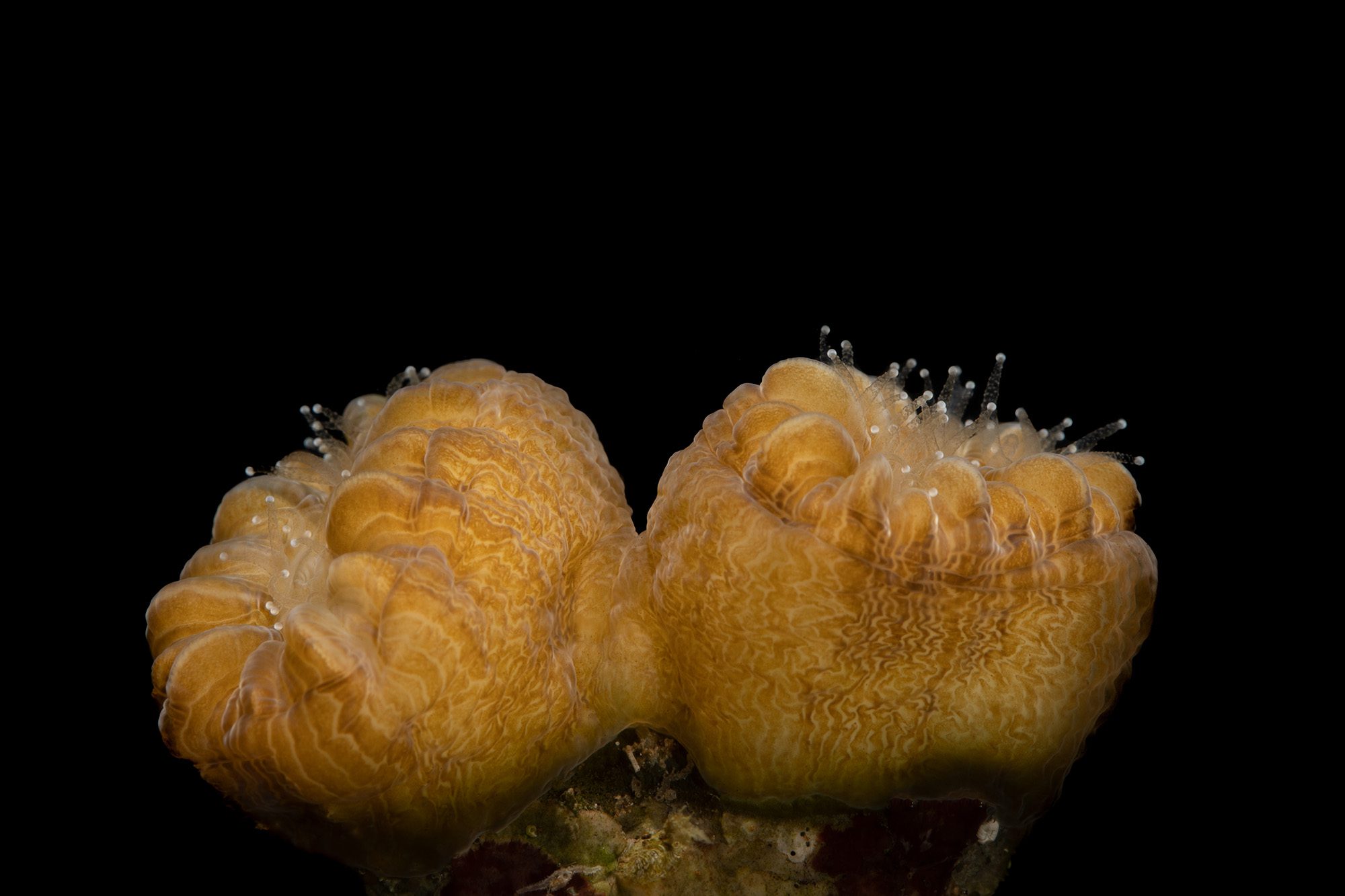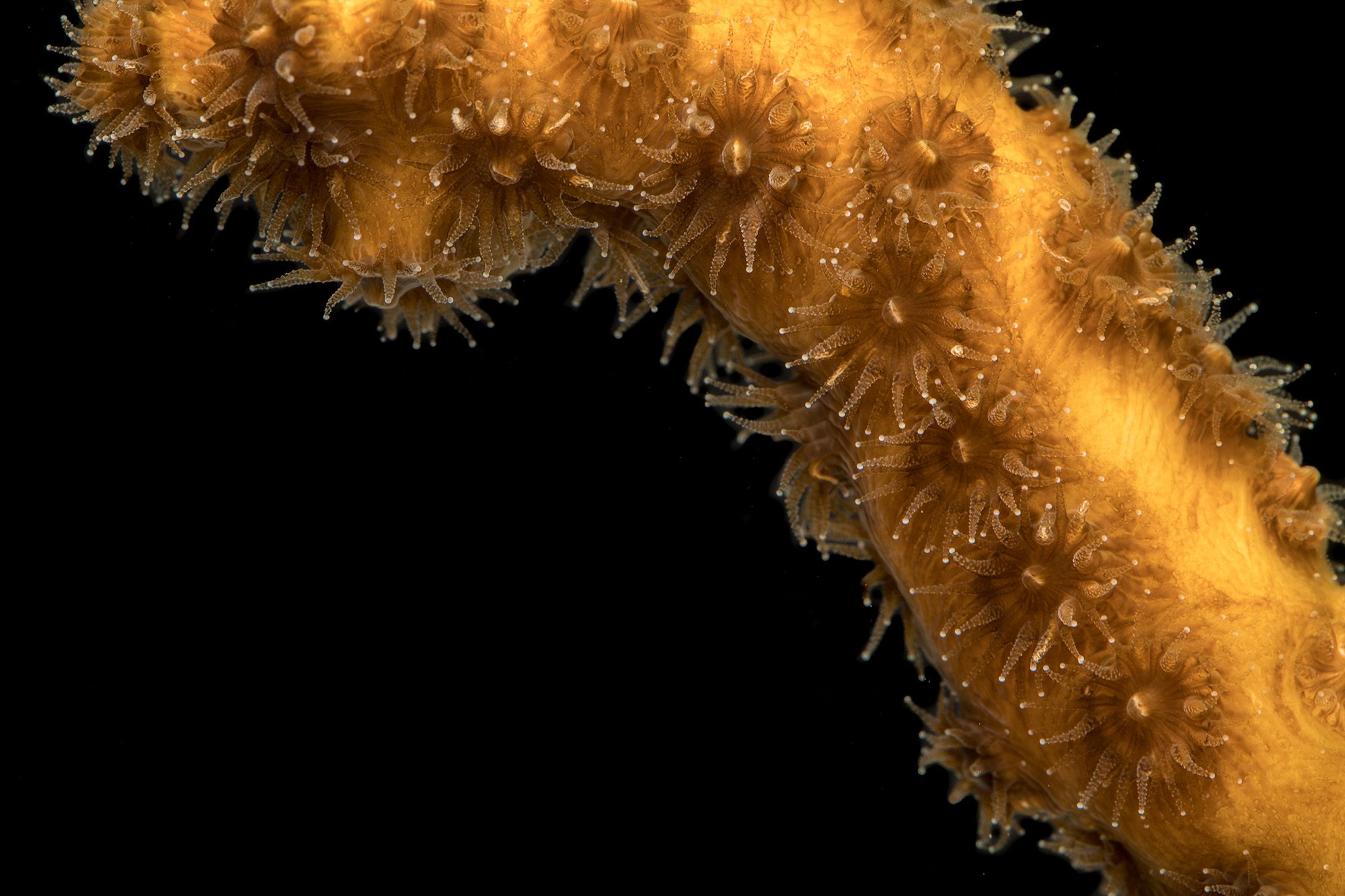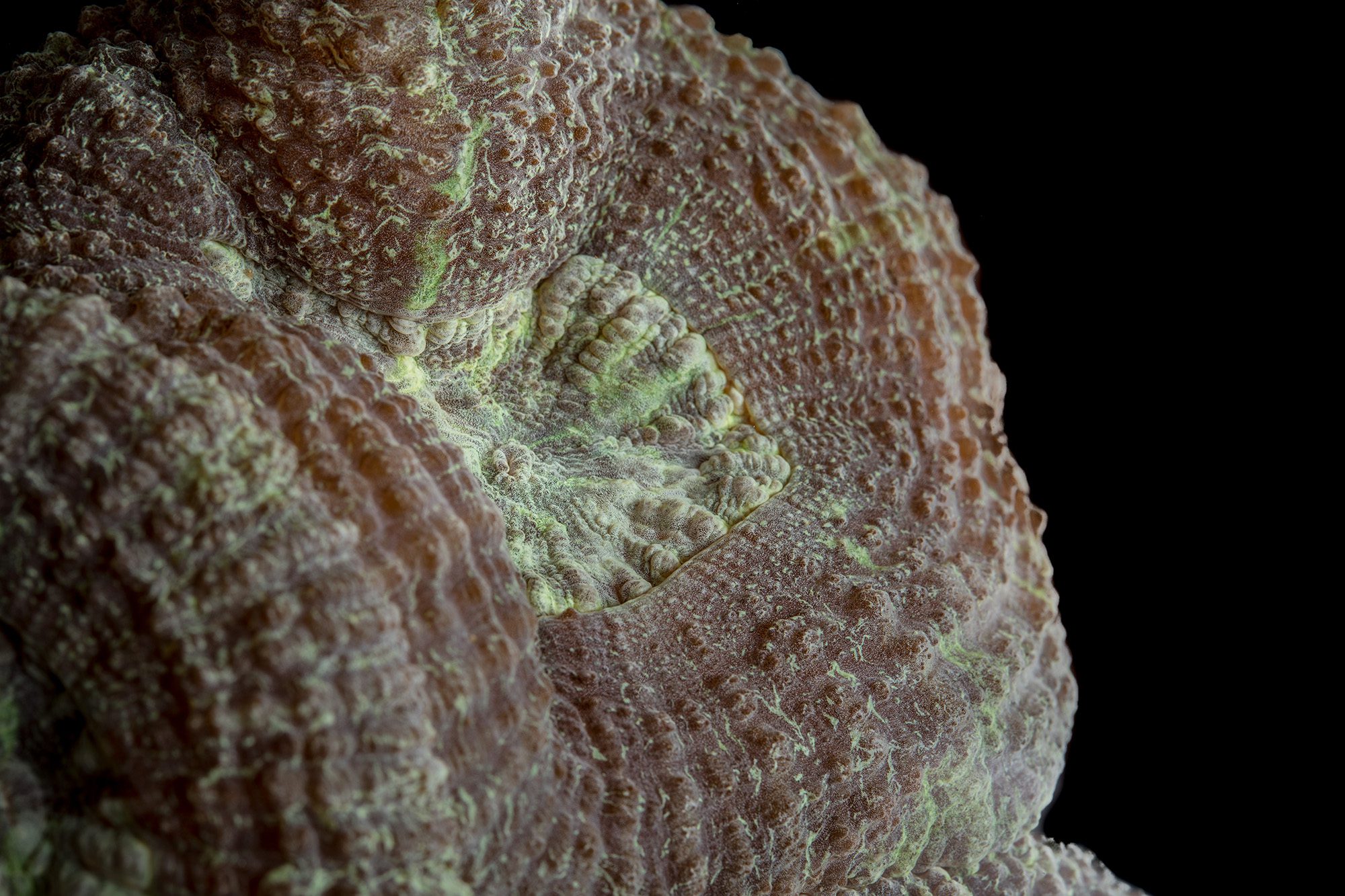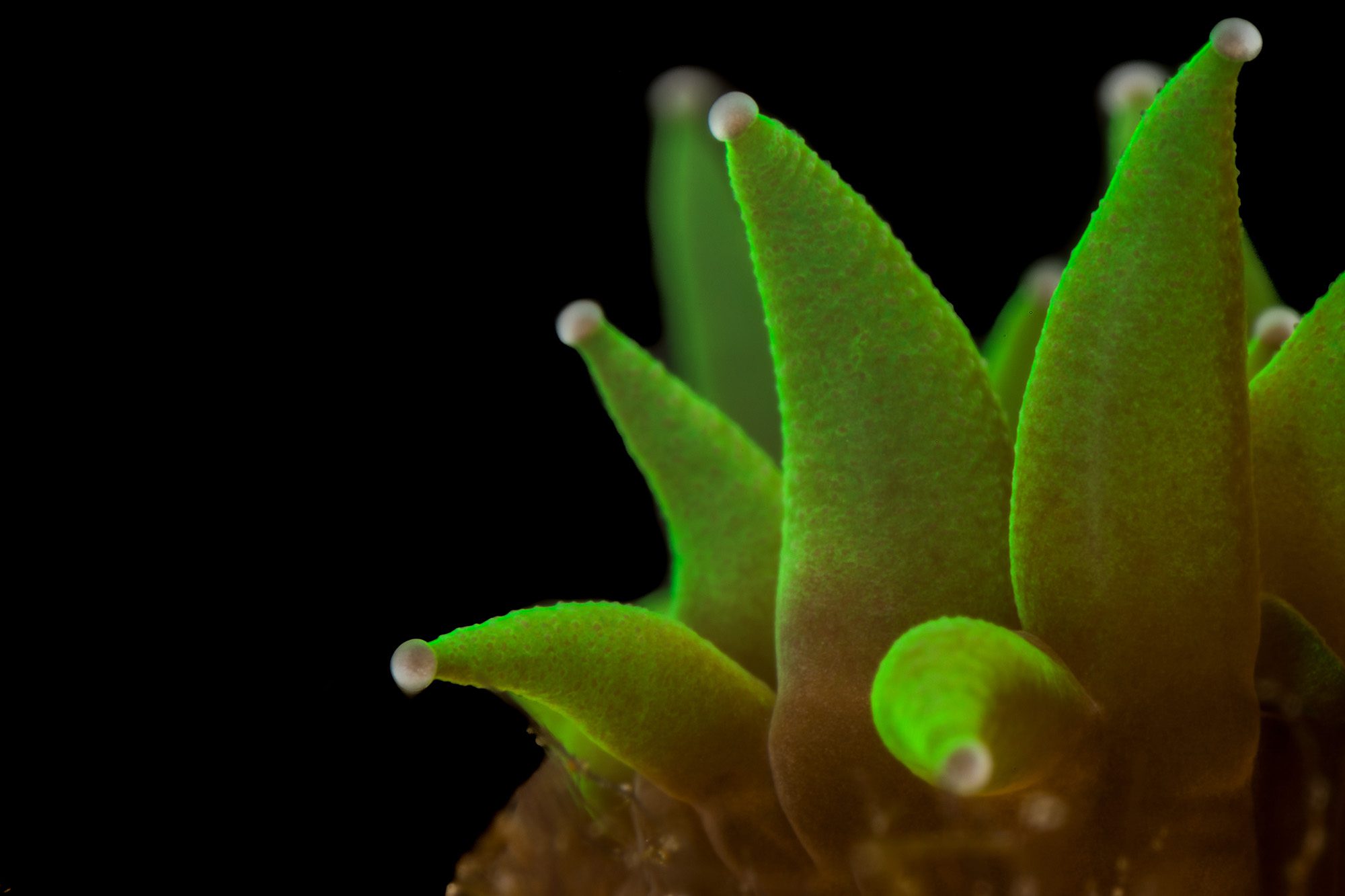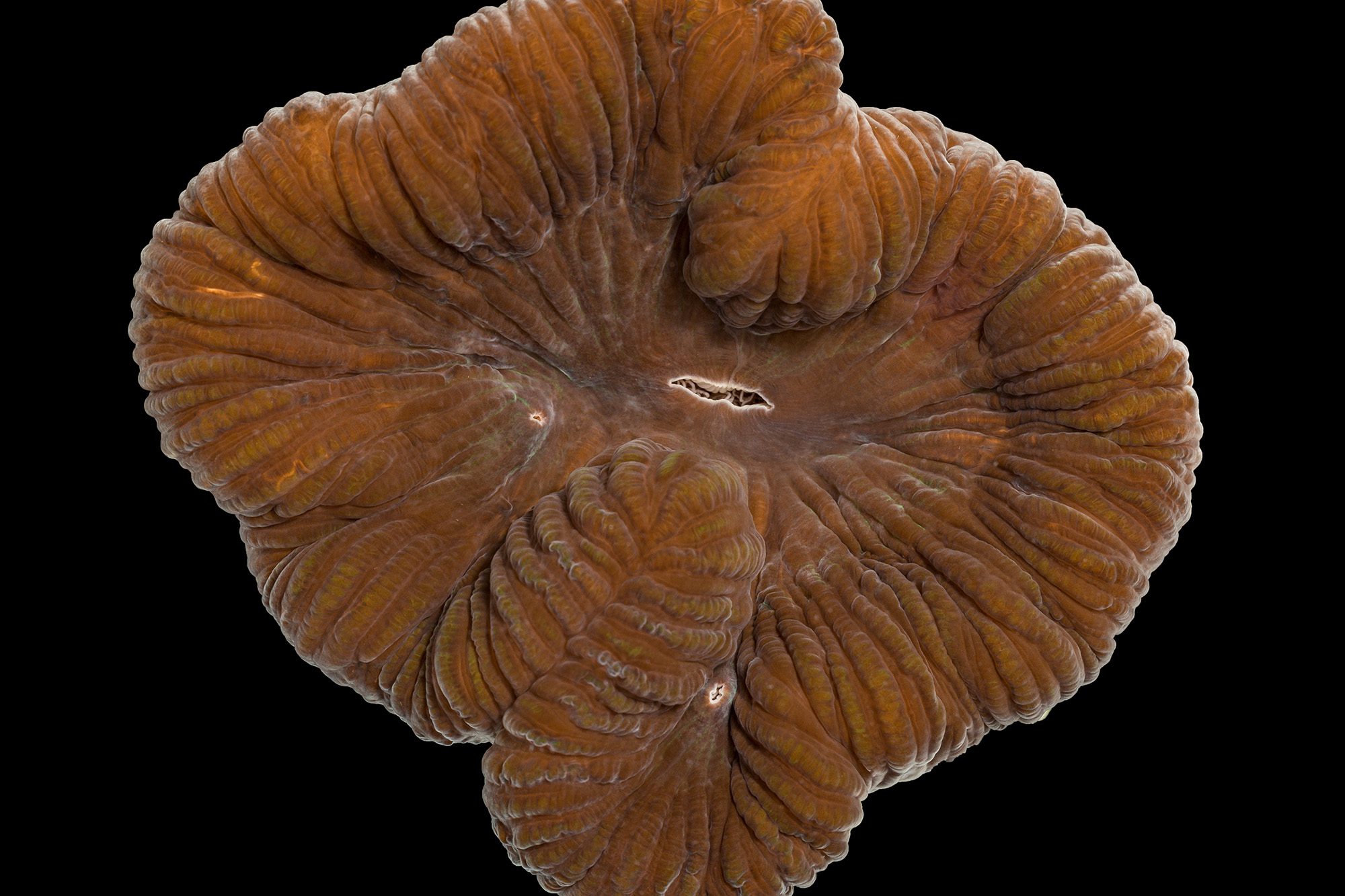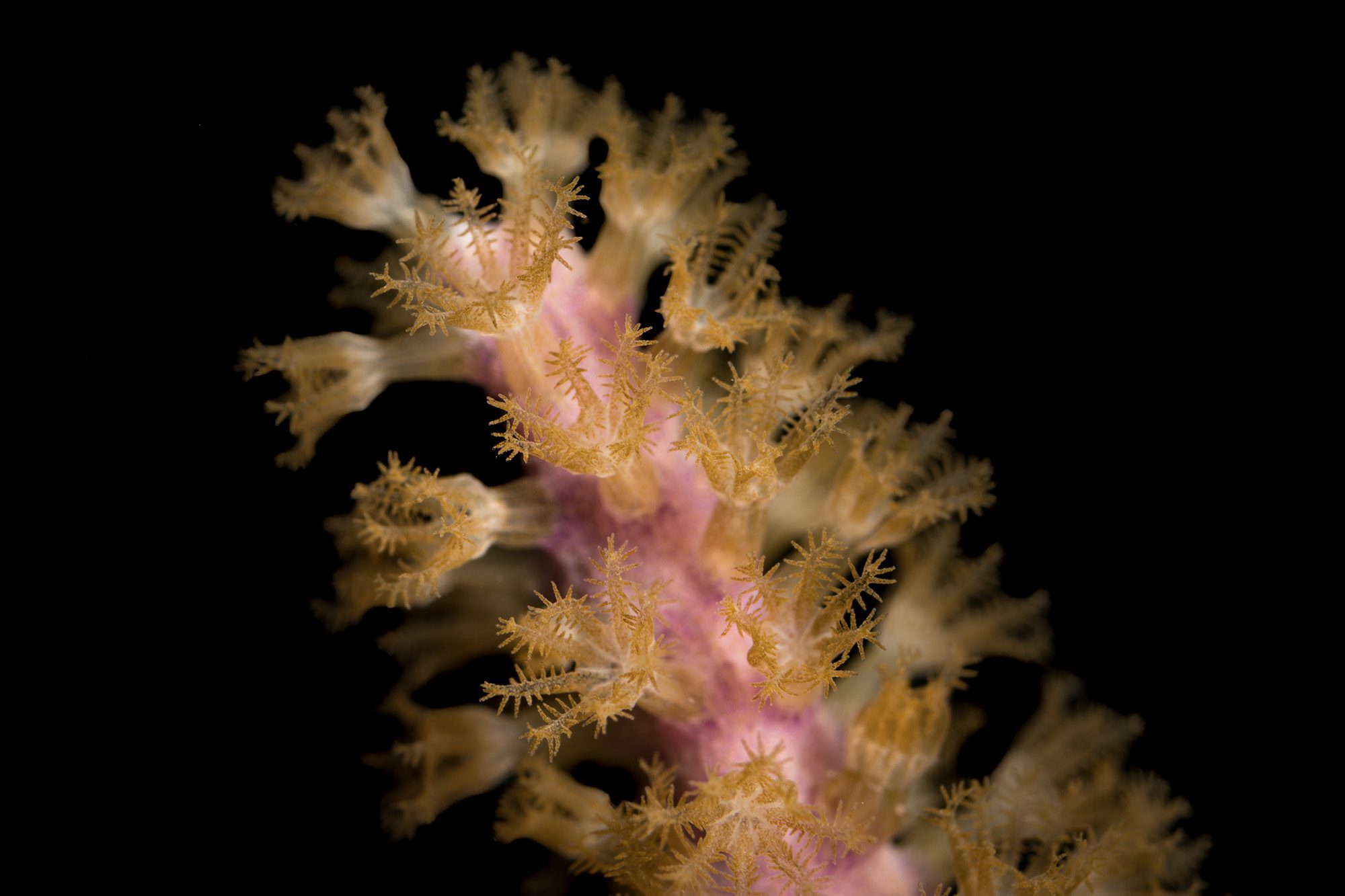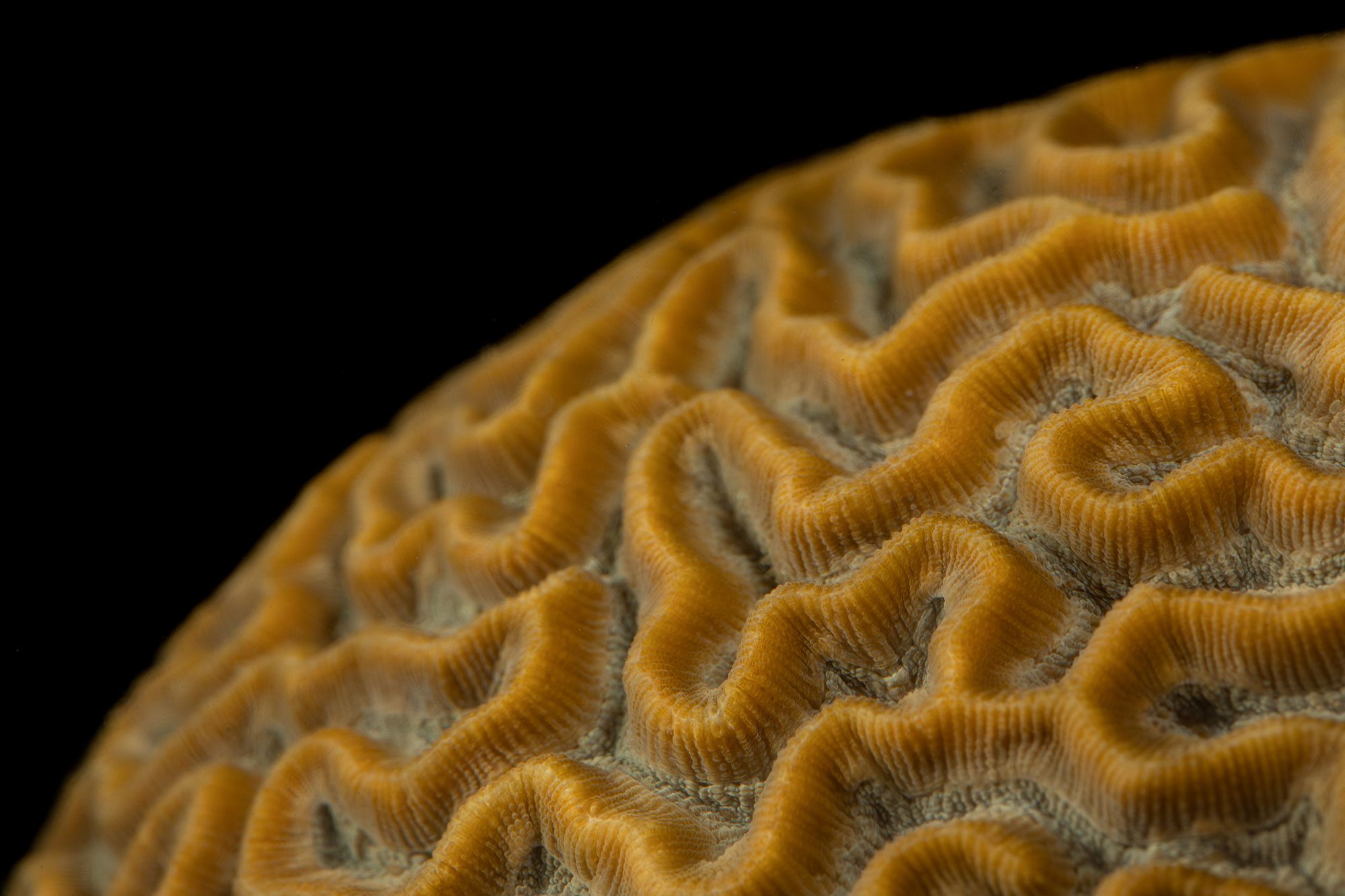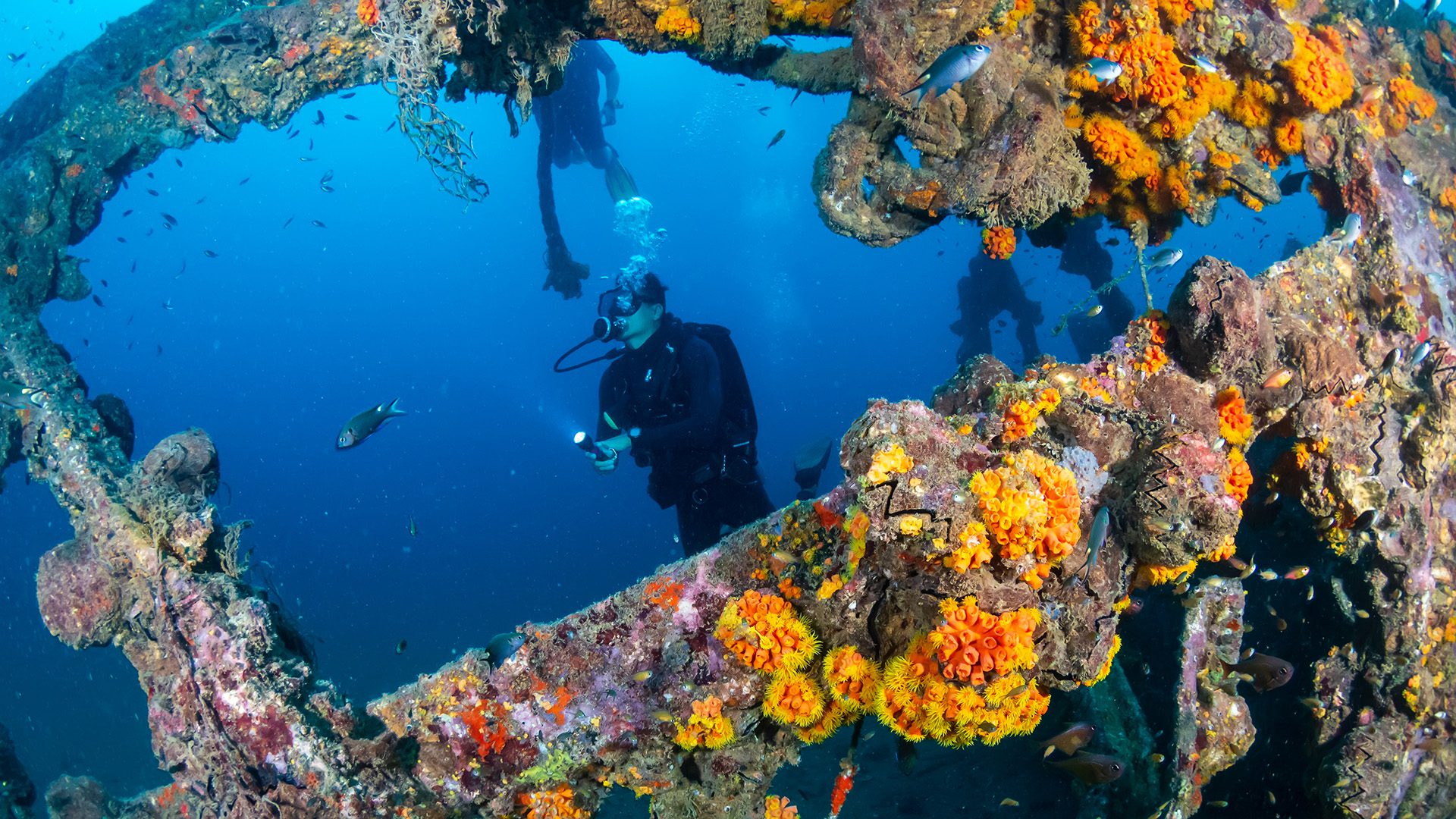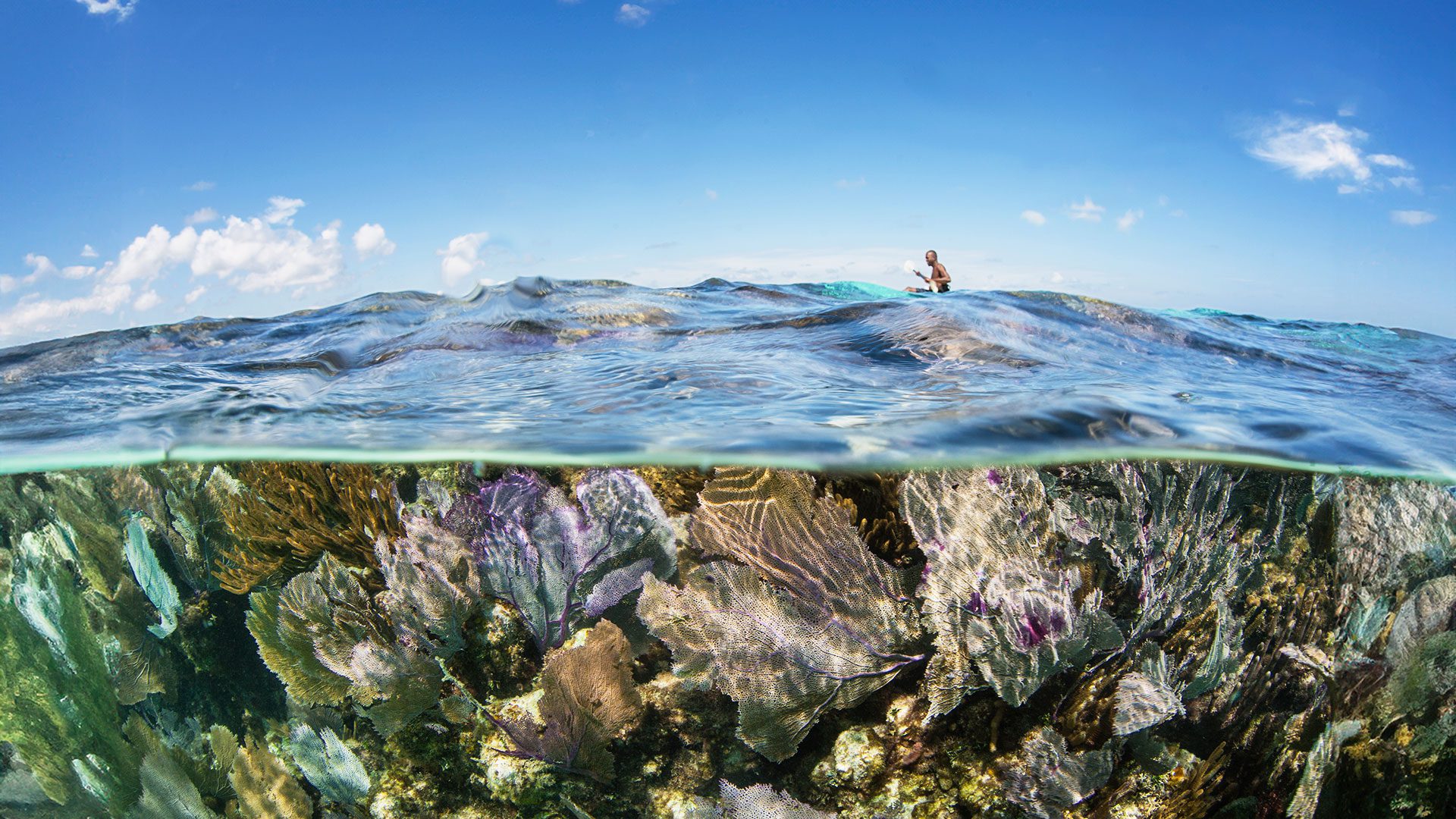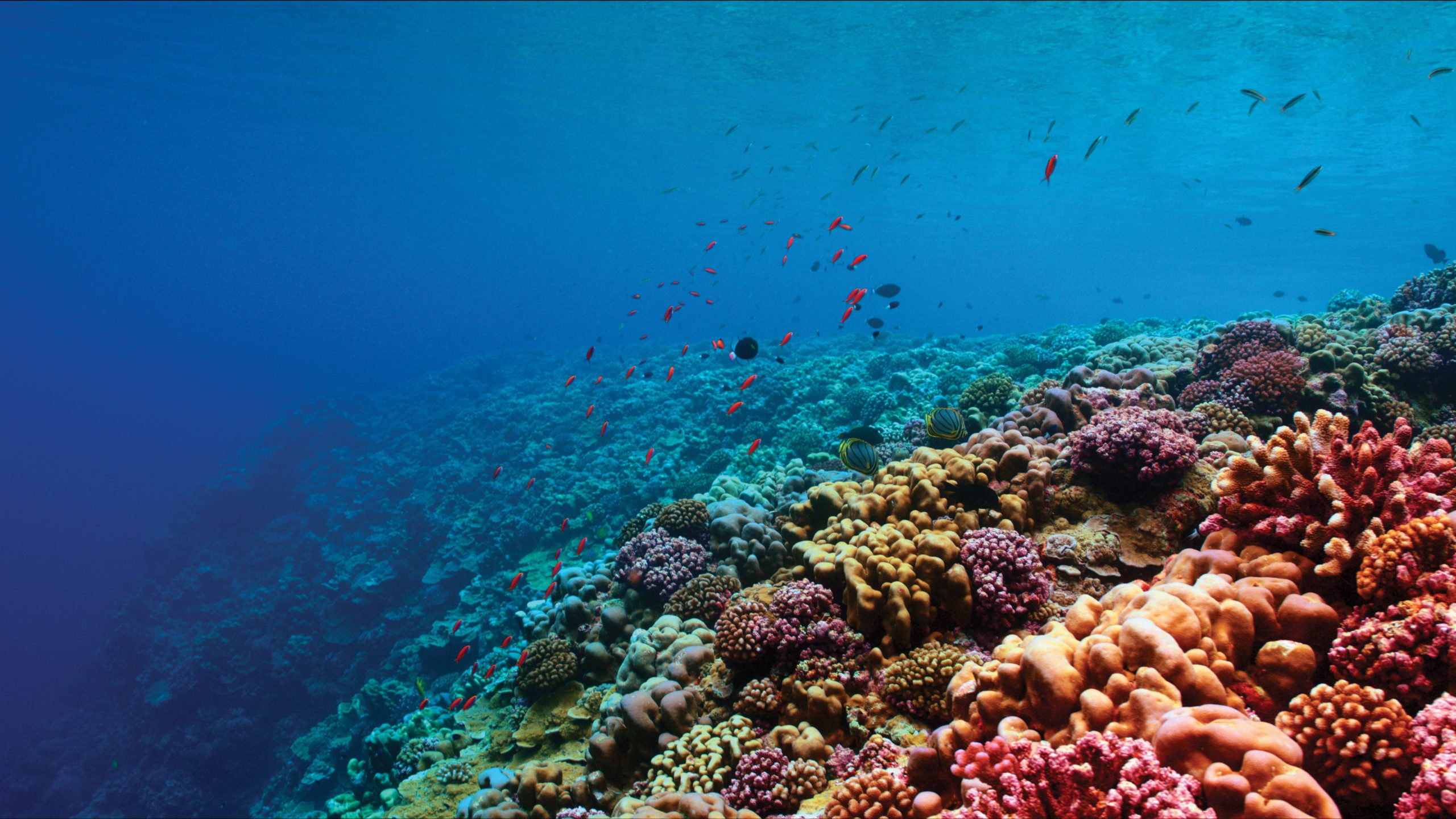WWith more than 6,000 known species, corals are an incredibly diverse group of animals. Here, at the macro-level you can see rare images of seven prominent Caribbean reef species, painstakingly photographed in laboratory tanks at the University of the Virgin Islands. Within each of these unique specimens is a grand architect, responsible for creating the skeletal structures that form the underpinnings of reef ecosystems. Look closely.
At the bottom center, smooth flower coral (Eusmilia fastigiata) and (at upper right center) boulder brain coral (Colpophyllia natans) are captured at the decisive phase when a polyp (a single coral animal) undergoes asexual cloning or “budding”—the latter of which can be seen from the forming of two new mouths. Bottom right, a hardy symmetrical brain coral (Pseudodiploria strigosa) chooses to build more meticulously, growing its colony by just one centimeter per year. A geometric fortress, its rock-like thickness provides a great wave-break across many Caribbean island shorelines.
Others, like the stalky bipinnate sea plume (Antillogorgia bipinnata) and robust ivory coral (Oculina robusta) form the skyline of this marine city. Their branches, lined with polyps, extend tiny tentacles into the currents to snatch passing particles for sustenance. They are only rivaled in vertical design by the pillar coral (Dendrogyra cylindus), which can grow even when toppled over by stormy seas. As a neon green larva, seen in the top left, it is only the size of a pencil eraser, but will soon grow to one of the most favored corals by scuba divers (and also the most threatened by environmental pressures).
The spiny flower coral (Mussa angulosa), on the other hand, provides more rotund structure. Growing to four inches in diameter, its polyps are the largest in the Caribbean—capable of stunning even small fish with stinging cells called cnidocytes. Like the smooth flower, pillar, and boulder brain corals, it is the only species of its genus.
Nearly every species here is in some way threatened by a warming climate. Many are safeguarded by marine researchers and stewards, including the artist behind these photos. Beyond them are species that thrive across the planet, from shallow tropical waters and dark deep-sea canyons to balmy climates and the extreme latitudes of Antarctica. They are the builders behind the vibrant reefs that more than 25% of marine life depends on.

